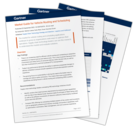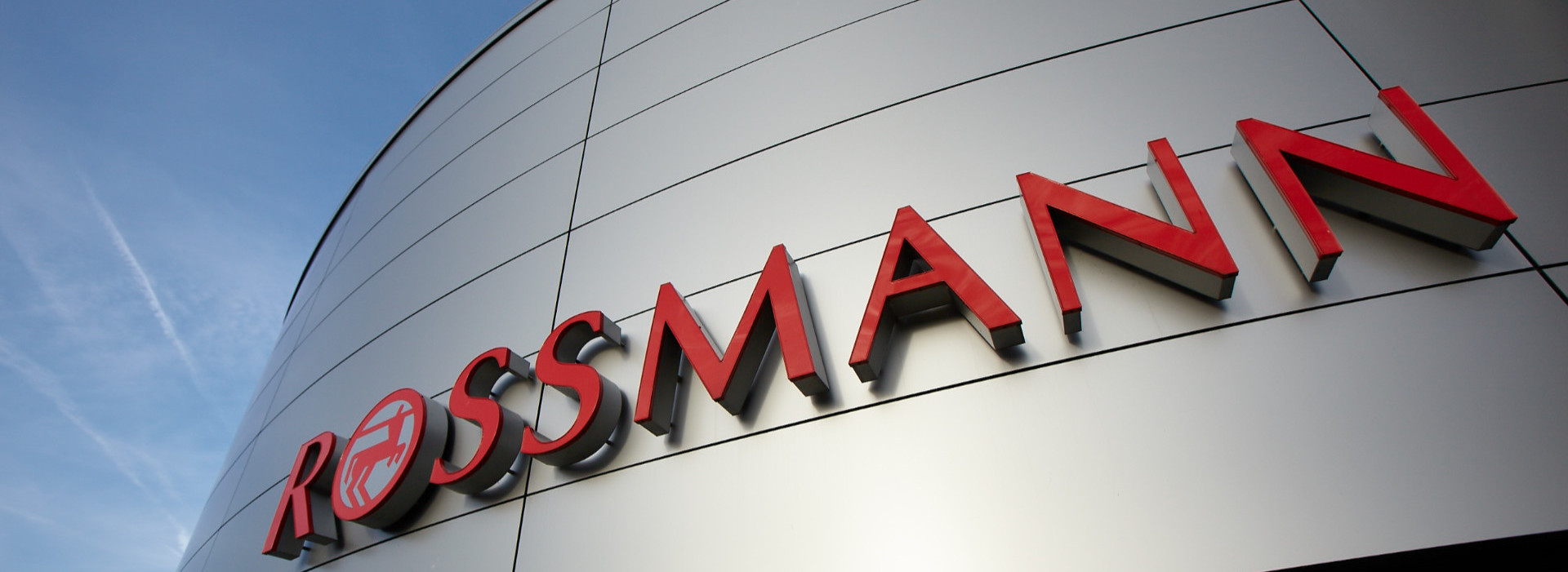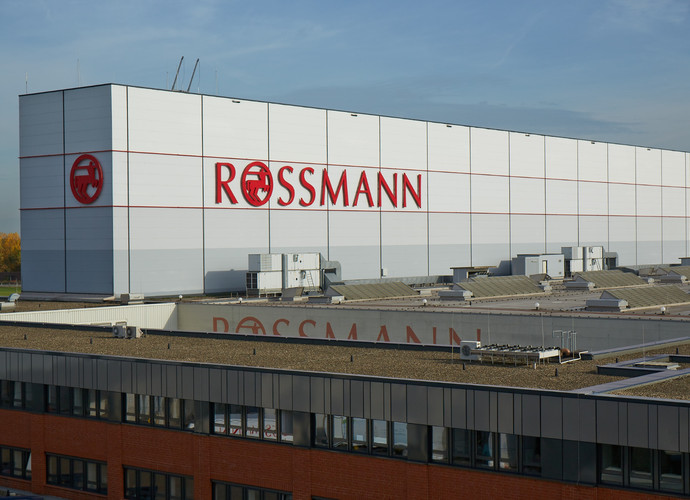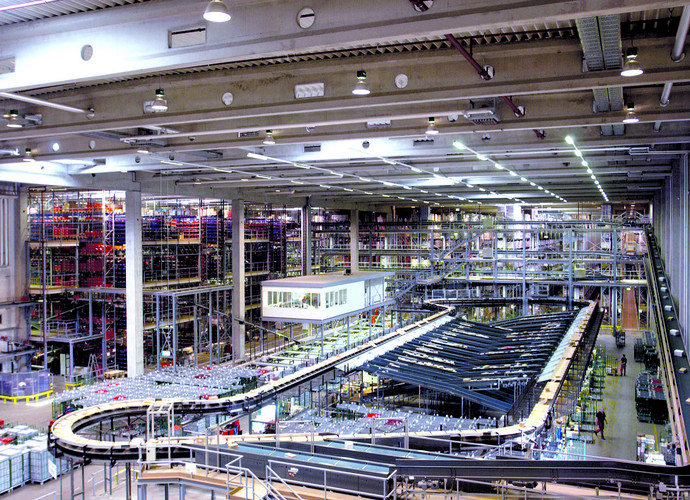From mascara, through chocolate and cleaning agents to sandwich toasters, ROSSMANN carries a wide range of over 22,000 items. The new regional warehouse in Brehna opens in November. It brings the number of sites to 9 with a total of 265,000 square meters of storage space. Every day, around 400 delivery runs leave the regional warehouses of the drugstore chain to supply the 2,150 stores in Germany. Customized software support is crucial here in order to precisely coordinate this enormous logistics volume. ROSSMANN therefore relies on the warehouse management system (LFS) from EPG in a total of four European countries – and has been doing so for about 20 years. Not only has ROSSMANN grown with LFS, but the feature set provided by LFS has also adapted to the requirements of the complex ROSSMANN logistics. This includes, for example, seamless and transparent processes, as necessary for daily deliveries to the stores. If a regional warehouse does not carry a certain product, ROSSMANN employs what they call a shuttle service. In these cases, LFS orders the missing items from the main warehouse for Germany in Landsberg.
All the threads meet in the main warehouse
In the main warehouse, located between Halle and Leipzig on the A9 motorway, ROSSMANN pools its entire range of C-item drugstore products that would not be worth storing multiple times in the regional warehouses. The majority of ROSSMANN's promotional items are also stored and picked in Landsberg. All regional warehouses are supplied directly with these C-items and advertising material. They therefore only keep a limited range of approx. 5,500 items in stock, including in particular the large-volume items that are delivered directly from the manufacturer to the regional warehouses due to the high transport costs, in addition to fast movers. The remaining 16,500 items are shipped from Landsberg, with Landsberg storing the entire ROSSMANN product range to ensure product availability. A positive side effect is that Landsberg can therefore act as a combined warehouse – as a main warehouse and as another regional warehouse.
The main warehouse has two core tasks. Its first job is to hold reserves to guarantee the availability of the goods, and then, second, it also has to be able to deliver the goods quickly and cost-effectively. The entire product range is therefore stored in the main warehouse, which at ROSSMANN means around 22,000 items in Landsberg. "It was necessary to record the items in different categories and create an overall process to integrate them most effectively into the logistics," says Andreas Balkau, Head of the Logistics System Coordination Department at ROSSMANN Logistik GmbH. There are items with high turnover, as well as promotional items that are only shifted in large quantities over a certain period of time, items with low volume, and finally special items such as very small or very high-value items, such as perfume.
Complex logistics structures
Up to one million movements are completed each day in Landsberg, which means a log of storage, transfer and retrieval. Almost all goods are initially transferred from goods incoming to the fully automatic highbay warehouse, which has 49,000 pallet spaces. This high-bay warehouse is located within a complex of buildings which, at a height of more than 40 meters (~130 ft), is around the same height as a 12-story skyscraper. From the high-bay warehouse, the items are transported at a high throughput rate via the 440-meter long electric monorail conveyor to the high-performance pallet order picking system. Automated storage and retrieval systems distribute the pallets in this three-story area, which has 2,700 pallet spaces, of which 1,200 are used as picking stations. The employees drive through the aisles with industrial trucks with up to four roll containers and they pick using pick-by-voice. For picking, ROSSMANN relies on Lydia® Voice from topsystem. "The solution has excellent speech recognition. So we barely need to train new employees," says Volker Wieters, responsible for logistics management and strategic planning at ROSSMANN. Items that are not required on pallets are transported from the high-bay warehouse to the repacking area. This is where they are repacked into containers, which are then transported to the automatic small parts warehouse.
From the supply area of the small parts warehouse, which has approx. 73,500 spaces for up to 140,000 containers, a conveyor system transports the order containers to the areas where the employees pick orders on two levels. The containers are output from the main line in the picking zone if they have items for the applicable order. Pick-by-light tells the employee what items to remove where and in what quantity and to add them to the applicable container. After picking, the worker pushes the container back onto the roller conveyor, which transports it to the next picking zone with ordered goods. There is end station storage at the end, where the order picking containers are stored temporarily and later distributed to roll containers for goods outgoing. The newly filled roll containers are combined in goods outgoing with the cages from pallet picking that are also part of the order. A total of around 8,000 roll containers leave the main warehouse every day to reach their destinations throughout Germany.
Everything always in flow with LFS
The warehouse management system (LFS) plays the central role in all processes. "The requirements are extremely high," says Andreas Balkau. Everything is always in flux, the throughput volumes of the units are continuously recorded, and the allocated storage locations are optimized. LFS keeps track of the stock, so permanent inventory is also possible. The software manages the items according to their characteristics and quantities, either by box or pallet, including temporarily by quantity during weeks when promotional campaigns are running.
All the materials handling and system systems are controlled in the same way. As logistics expert Andreas Balkau explains, it is all very flexible: "If one of the material flow calculators reports that a bin location is currently unavailable – for example, due to the failure of a storage and retrieval unit – a new bin including route is determined immediately." On the other hand, only a limited reserve is available in the picking aisles to allow for short replenishment routes. The additional reserves are distributed over as many aisles as possible in the warehouse, so that access to the goods is still possible, even if a sector fails. "LFS lets us keep an eye on all systems in one place," says Andreas Balkau in summary.
Logistics in Eastern Europe
ROSSMANN has been active outside Germany since 1993, when the first ROSSMANN stores opened in Eastern Europe in Lodz (Poland) and Debrecen (Hungary). ROSSMANN now has more than 1,780 stores across Poland, Hungary, the Czech Republic, Albania, the Republic of Kosovo and Turkey. The stores have total revenue of around 2.8 billion Euros. In Hungary, the main warehouse in Budapest currently supplies the 180 drugstores nationwide, while the main warehouse in Prague is responsible for the 131 Czech stores.
The Lodz warehouse adopted the concept developed in Germany of a main warehouse to supply the now more than 1,000 Polish stores in 400 cities and the tried and tested warehouse logistics structure has been implemented as a like-for-like replica of the Landsberg warehouse. The warehouse management system (LFS) from EPG also manages the complex system of all the ROSSMANN main warehouses and other regional warehouses in Europe.




